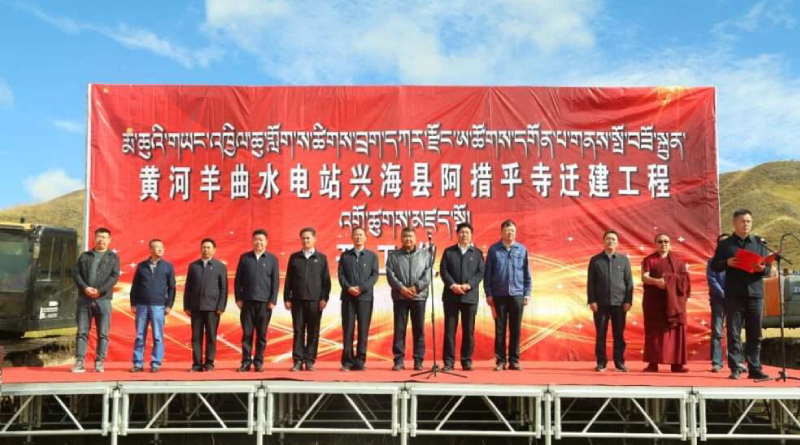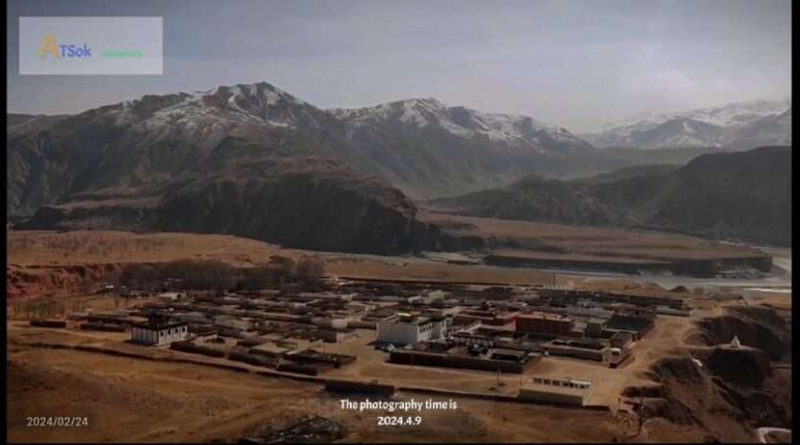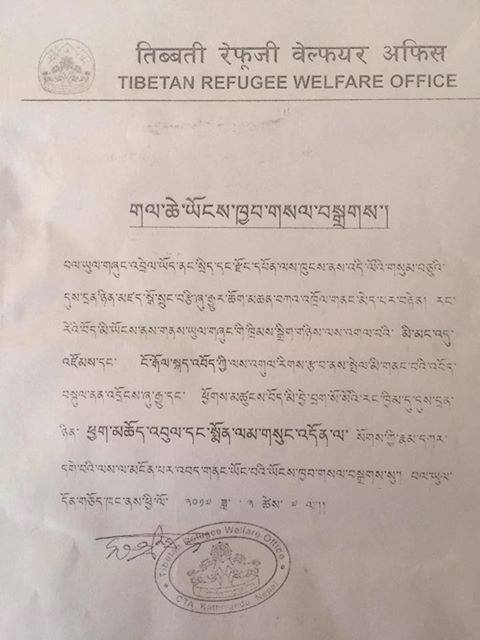Another Centuries Old Tibetan Monastery Faces Destruction Due To China’s Dam Project
By Tsering Choephel

DHARAMSALA, 15 April: Atsok Gon Dechen Choekhorling Monastery, a 19th-century Tibetan Buddhist Monastery in Amdo, and Tibetans living in the area are facing enforced relocation due to China’s construction of a hydropower dam on the Machu River that runs through it, reports RFA.
Chinese authorities have begun relocating the 19th-century Tibetan Buddhist monastery in Dragkar county in Tsolho prefecture in the Amdo region that is expected to be submerged underwater after the completion of the world’s tallest 3D-printed hydropower dam, RFA said, citing two sources from the region.
According to the report, monks from the monastery have been petitioning Chinese authorities for the past two years, appealing to them to rescind relocation orders issued by China’s National Development and Reform Commission (NDRC).
China’s Department of National Heritage reportedly declared in April last year that the artefacts and murals inside the monastery were of “no significant value or importance” and that its relocation would proceed.

With the sacredness of the site being an essential belief system for Tibetan Buddhists, China’s construction of a dam that endangers this monastery is considered by Tibetans as yet another example of Beijing’s disregard for their culture, religion, and environment.
Chinese authorities have stated that they will cover the cost of dismantling the present monastery and reconstructing it, as well as for ceremonies and rituals at the new location, according to the sources who spoke to RFA. However, the sacred murals and stupas at the site await inevitable destruction.
In a video from the region circulating on social media, local Tibetans can be seen praying and prostrating to the stupas, which the report’s sources said was their way of “bidding farewell to this ancient monastery that has been their place of devotion for generations of Tibetans.”
The NDRC announcement states that 15,555 Tibetans living in 24 towns and villages in Dragkar, Kawasumdo, and Manga areas of the region will face relocation due to the construction of the Yangdu dam.
The sources revealed that Chinese authorities have warned the head of the monastery and the local president that they “will be punished for any disturbance caused.”
In February this year, the Chinese authorities’ announcement of the forced relocation of monasteries and villages in Kham Derge to clear land for the construction of the Kamtok dam on the Drichu river in the area ignited large peaceful protests by the monks and local Tibetans. The Chinese authorities, in their typical authoritarian rule, arrested over a thousand Tibetans in the following days to suppress the Tibetan voice of discontent.
Founded in 1889 by Atsok Choktrul Konchog Choedar, the monastery in Dragar is home to more than 160 monks today. In 2021, Chinese authorities issued an order forbidding monks under the age of 18 from enrolling, studying, and living in the monastery.
The expansion of the Yangdu hydroelectric plant started in 2022 and is said to be completed later this year, according to the report. Declared to become the world’s tallest 3D-printed dam, the power plant is expected to generate about 5 billion kilowatts of power annually for the Chinese province of Henan.
The first section of the dam, said to be over 150 meters tall, is scheduled to become operational this year, with the entire project becoming operational the following year, according to the report.
In February this year, the Chinese authorities’ announcement of the forced relocation of monasteries and villages in Kham Derge in the clearance of land for the construction of Kamtok dam on Drichu River in the area ignited large peaceful protests by the monks and local Tibetans. The Chinese authorities, in their typical authoritarian rule, arrested over a thousand Tibetans in the following days to suppress Tibetans’ voices of discontent.



